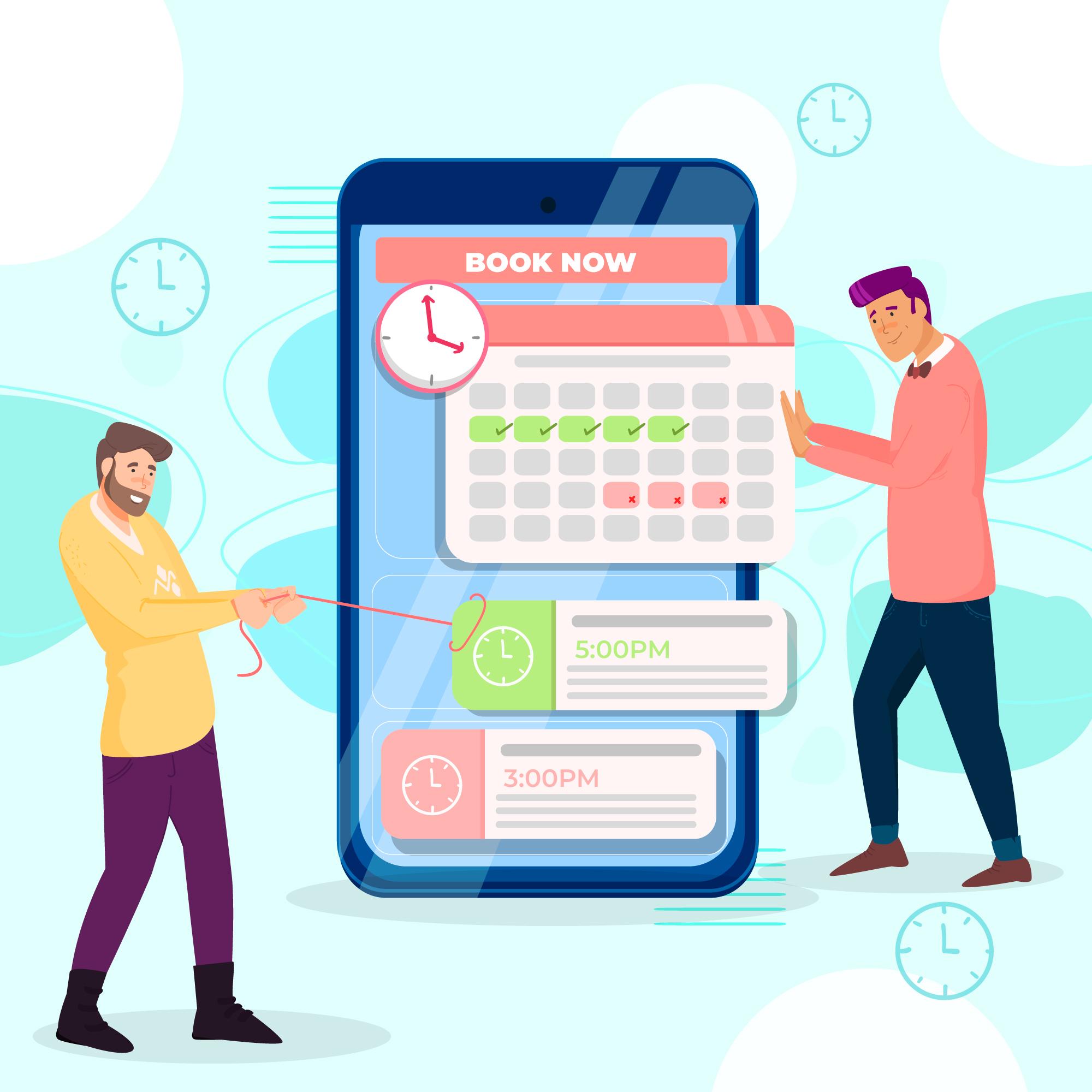Table of Content
Try Vizitor for Free!

Fri, Jan 3, 2025
Read in 10 minutes
Imagine you’ve just signed up for a new service, excited to get started, but then you find yourself waiting – not in a physical queue, but in a seemingly endless virtual queue for the onboarding process. The wait feels long, frustrating, and the excitement starts to fade away.
This is the last thing you want your new customers to feel when they sign up for your product or service.
Customer onboarding is a crucial first step in turning new users into loyal customers. It’s not just about showing them how to use your product or service—it’s about making them feel confident, valued, and prepared to get the most out of what you offer.
A great onboarding experience sets the stage for customer satisfaction and higher retention rates.
Customer onboarding, like any other process, can quickly become a bottleneck if not handled efficiently.
Why Is Customer Onboarding Crucial?
First impressions are everything, and an effortless onboarding experience can lay the groundwork for lasting customer relationships.
When new users are forced to wait too long or navigate a complex process, it can feel like they’re stuck in a queue.
But what if you could turn your customer onboarding into a smooth, fast, and seamless experience—no queues, no delays—just a welcoming path for new users?
In this article, we’ll explore the importance of a well-executed customer onboarding journey, highlighting best practices that not only build customer loyalty but also drive business growth.
What Is Customer Onboarding?
Customer onboarding is the structured process that introduces new users to a product or service, aiming to provide them with everything they need to succeed from the very first interaction.
It involves personalized communication, tailored content, and interactive support to guide the user through every step of their early journey.
Proper onboarding ensures that customers are well-prepared to derive maximum value from the product, fostering long-term success.
Intercom improved customer retention by 30% by introducing a personalized, automated onboarding process that welcomed users and guided them through product features.
Key Components of a Customer Onboarding Process
Just like a smooth flow in a queue ensures a seamless customer experience, the key components of a customer onboarding process should work together efficiently to guide new customers.
Here are the essential steps to create an effective onboarding journey:
Clear and Welcoming Introduction
The first step to a great onboarding experience is a warm and clear introduction.Just as customers expect a clear signpost in a queue, they also need a warm and welcoming introduction when they first interact with your business.
This can include personalized emails, tutorials, or welcome messages that set expectations for what’s to come.
According to a Wyzowl survey, 86% of customers are more likely to stay loyal to a brand that offers a seamless and engaging onboarding experience.
Streamlined Setup
Simplify the registration process to ensure customers can get started with minimal effort.
A user-friendly interface and easy-to-follow setup instructions will help them begin using your product or service without feeling overwhelmed.
Guided Product Demonstration
Offering a guided tour or demonstration is essential to help customers understand how to use your product or service effectively.
A step-by-step walkthrough of key features will ensure they are comfortable and confident navigating the platform.
Real-Time Support
Providing immediate access to support during the onboarding process is crucial.
Whether through live chat, email, or phone support, make sure customers can easily get help with any issues or questions they encounter.
Also Read: Best Customer Support Tools
Feedback gathering
After the onboarding process is complete, gather feedback from customers to evaluate their experience.
Case Study: Slack experienced a 15% increase in user engagement after redesigning their onboarding process to be more intuitive and interactive, ensuring users grasped the value of their platform early on.
9 Best Practices for Customer Onboarding
Customer onboarding is a pivotal step in turning prospects into long-term, loyal clients. By prioritizing the user’s experience from the moment they sign up, businesses can ensure better retention, engagement, and satisfaction.
Here are nine best practices to elevate your customer onboarding strategy:
1. Streamline Onboarding Steps
Simplify the onboarding journey by minimizing friction points.
Just as in a well-designed queue management system, reduce bottlenecks by eliminating unnecessary steps. Keep the process as straightforward as possible, ensuring customers can easily understand what actions they need to take at each stage.
This can be achieved by automating steps, offering clear instructions, and using user-friendly interfaces.
2. Personalization Is Key
Personalized onboarding is essential in making customers feel valued.
Much like queue management systems personalize the customer experience through priority or VIP lanes, you should tailor the onboarding flow based on customer preferences, needs, or demographics.
Providing individualized content, tutorials, or product recommendations based on the customer’s behavior helps create an engaging experience.
3. Provide Clear and Actionable Instructions
Instead of overwhelming new users with all the features at once, break down the onboarding process into clear, digestible steps.
Use tooltips and guided tours that direct users to key actions so they can learn while interacting with the product. This step-by-step approach helps users feel in control.
4. Offer Customer Support
Even the best onboarding process may not be foolproof. Provide proactive support through live chat, phone calls, or email, especially during the initial stages of onboarding.
Reach out to users early to ensure they have all the resources they need to succeed. Offering assistance before users even ask can significantly enhance their experience.
5. Interactive and Engaging Tutorials
Offer customers interactive and hands-on tutorials to help them become familiar with your product.
Similar to how queue systems engage customers with digital displays or entertainment options while they wait, provide engaging product demonstrations or walkthroughs that allow users to interact with features directly.
This helps users feel more comfortable and confident in using your product from the start.
6. Break Down Complex Tasks into Small Steps
A complex, lengthy onboarding process can overwhelm users. Instead, break it down into smaller, manageable tasks, just like how a queue management system breaks down long waits into shorter intervals by segmenting users based on categories.
This helps customers feel more in control and motivated to continue the process.
7. Offer Self-Service Options
While offering live support is important, allowing customers to self-serve and find answers on their own is equally valuable.
Provide a comprehensive knowledge base, FAQs, or a user forum where customers can access resources and troubleshoot common issues.
8. Track Progress and Celebrate Milestones
Show users their progress throughout the onboarding process.
A queue management system provides updates on waiting time, using a progress tracker or checklist during onboarding gives customers a sense of accomplishment.
Celebrate each milestone they achieve to keep them motivated and engaged. This will also help prevent users from dropping off before completing the process.
9. Collect Feedback for Improvement
Customer onboarding should be a dynamic process. Encourage new users to share their feedback on the experience, allowing you to make continuous improvements.
Gathering insights on what users like or struggle with helps you optimize the onboarding process and improve long-term customer satisfaction.
How to Measure the Success of Your Onboarding Process
To ensure your onboarding process is effective, it’s crucial to track key metrics that reflect user engagement and satisfaction. Here are the essential indicators:
1. Onboarding Completion Rate
Monitor how many users complete the entire onboarding process. A low rate may indicate friction points or unclear steps.
2. User Engagement
Track how often users interact with your product after onboarding. High engagement shows users are finding value in your product.
3. Customer Retention Rate
Measure whether new users continue using your product. High retention suggests your onboarding is setting the foundation for long-term relationships.
4. Customer Satisfaction
Gather feedback from users to understand their experience. Positive responses signal a successful onboarding process, while negative feedback highlights areas for improvement.
Tracking these metrics helps you refine your onboarding process for better user experiences and outcomes.
Key Hurdles in Successful Customer Onboarding Process
Complex Processes: A lengthy or complicated process can overwhelm customers. Simplify the steps to keep them engaged.
Lack of Personalization: Generic onboarding fails to connect. Tailor the experience to individual customer needs.
Insufficient Support: Customers may need help. Offer timely and accessible support for smoother transitions.
Over-reliance on Self-Service: Some customers need hands-on help, not just self-service. Find a balance.
Poor Communication: Clear, concise communication is key to guiding customers through onboarding.
By addressing these challenges, businesses can improve their onboarding process and build stronger customer relationships.

The Importance of Feedback in the Onboarding Process
Understanding Customer Expectations
Feedback helps identify what customers find useful or challenging during onboarding.
Continuous Improvement
Regular feedback ensures the onboarding process evolves to meet customer needs effectively.
Building Trust
Actively seeking input shows customers that their opinions are valued, fostering loyalty.
Multiple Feedback Channels
Use surveys, in-app ratings, or direct conversations to collect valuable insights.
Closing the Loop
Address concerns raised by customers and communicate how their feedback led to improvements.
Best Practices for Your Queue Management Onboarding Process
- Simplified System Introduction: Highlight key features like queue tracking and real-time updates in a user-friendly way.
- Customizable Setup: Allow businesses to tailor queues, notifications, and priorities based on their specific needs.
- Mobile Accessibility: Ensure the system is mobile-friendly for managing queues on the go.
- Automated Alerts: Enable notifications for staff and customers to streamline queue handling.
- Real-Time Dashboards: Offer live insights into wait times and queue performance for better decision-making.
- User Training and Support: Provide quick guides, FAQs, and live assistance to resolve issues promptly.
- Feedback Integration: Regularly gather user feedback to improve and adapt the system.
Queue Management systems like Vizitor offer digital and interactive features and a dashboard to make their users comfortable while using the system for their businesses providing them with clear communication and professional interfaces.
How Vizitor QMS Enhances the Customer Onboarding Experience
Streamlined Check-Ins
Vizitor offers an intuitive digital check-in system that eliminates manual paperwork, ensuring a smooth and professional first impression.
Personalized Welcomes
With Vizitor, businesses can greet customers with customized messages, making them feel valued from the start.
Queue Management Integration
By integrating queue management features, Vizitor minimizes waiting times and ensures a seamless onboarding process.
Real-Time Notifications
Vizitor sends instant notifications to notify staff about customer arrivals, enabling proactive service.
Secure Data Management
Vizitor ensures all customer information is securely stored and easily accessible for a smooth onboarding journey.
Customizable Onboarding Workflows
The platform allows businesses to design tailored onboarding workflows, ensuring every customer’s unique needs are met efficiently.
Analytics and Insights
Vizitor provides actionable insights into customer behavior during onboarding, helping businesses refine their processes for improved satisfaction.
Case Studies:
1. Airbnb’s Step-by-Step Onboarding
Airbnb has a streamlined onboarding process for hosts and guests alike.
For hosts, they guide them through setting up their listings with detailed steps, including photo tips and pricing suggestions.
For guests, the app shows the easiest way to book a home, offering clear instructions and real-time chat support.
This thoughtful approach resulted in a 15% increase in successful bookings within the first three months.
2. Duolingo’s Gamified Onboarding
Duolingo employs a gamified onboarding process where new users are encouraged to complete lessons, and every step feels like a mini-achievement.
The reward system keeps users coming back. This strategy led to an 80% increase in user engagement, as new users were motivated to continue learning through a fun and engaging process.
Elevate Your Customer Onboarding with Smart Solutions
A well-structured customer onboarding process is more than just a formality—it’s the gateway to building trust, enhancing customer satisfaction, and fostering loyalty.
By using innovative features of QMS tools like Vizitor and adopting best practices, businesses can create a seamless and memorable onboarding experience that sets the foundation for long-term success.
By continuously refining your approach, you can build stronger, lasting relationships that turn new users into long-term clients.
Take the Next Step!
Get in Touch: Have questions? Our team is here to help you create the ultimate customer experience.









